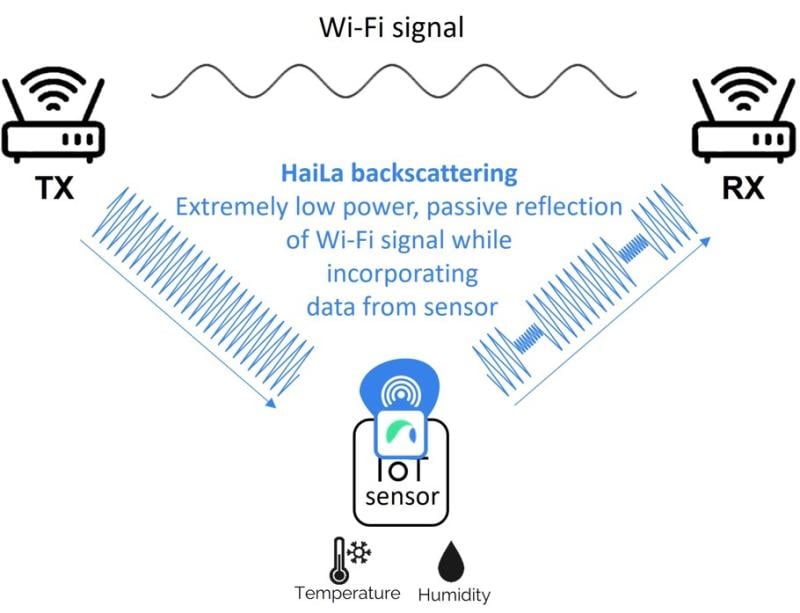Another in a series of previews to Sensors Converge 2023
With continued significant growth in connected IoT sensor devices globally, dealing with sensor battery usage costs and disposal is a daunting prospect. As well, the beginning of the battery life cycle – the cost and energy consumption to produce and recycle them – is compounding the challenge.
Deploying IoT sensor endpoints in a sustainable and cost-effective way is an important objective for organizations across many market verticals. Finding ways to reduce energy consumption and eliminate batteries from wireless sensors for improved efficiency will remove the barrier to increasing sensor deployments.
Actionable data and automation: Key drivers for IoT sensing
Critical to many end users are initiatives to reduce energy consumption and improve efficiency. The use of connected IoT sensing is central to these initiatives. One example is sensors in building materials to detect common building issues like mold, water leaks, and electrical hot spots to allow them to be addressed before significant costs are incurred. Other applications for sensors include improving HVAC performance and efficiency through temperature and humidity monitoring as well as occupancy, shading, and airflow.
It is expected that wireless sensing in smart buildings to improve efficiency will move from high-end commercial to mainstream residential installation. Smart home applications include home environmental monitoring and security.
Automation for inventory management, asset tracking, and production line monitoring are key areas where the use of IoT sensing is expected to grow significantly. Electric vehicles will reduce wiring harnesses for non-safety critical elements and begin to use long-life wireless sensing.
The list of applications for IoT sensing continues to grow where end users want to reap the benefits of actionable data and automation for processes and infrastructure.
A key element: Power efficient wireless connectivity for IoT sensors
Looking at the issue from the sensor node perspective, the key to solving the battery usage problem is to drastically improve the power efficiency of the wireless connection. Relying on existing WLAN protocols like Wi-Fi is advantageous in order to avoid the investment and energy expenditure to add new, proprietary infrastructure to support a massive increase in connected devices. Progress has been made to increase the power efficiency of Wi-Fi with the introduction of low power chipsets but, in many cases, this technology is not efficient enough for sensing applications.
The next step for IoT sensing is extremely power efficient, ultra-low power wireless connectivity that can significantly extend battery life – for example, over the life of the sensor product – and ultimately enable battery-free operation. Achieving this type of power efficiency for wireless connectivity while also utilizing Wi-Fi infrastructure offers a viable path for sustainability initiatives and cost savings for end users.
Passive backscatter over Wi-Fi: a step-function improvement in wireless power efficiency
Passive backscatter, a foundational technology underpinning UHF RFID but implemented instead over Wi-Fi, is one approach to gaining significant improvements in power efficiency for IoT sensing while also utilizing an existing, ubiquitous wireless protocol. As an ultra-low power radio frequency (RF) communications technology, passive backscatter relies on the use of detecting ambient RF signals – in the case above, Wi-Fi signals— inserting data from a sensor and reflecting the data back into a Wi-Fi receiver in the WLAN network.
The nature of the passive reflection is what allows for extreme power efficiency as there is no high-power radio transmitting the sensor data back into the Wi-Fi network. With this approach, sensor tags using passive backscatter can be deployed in Wi-Fi networks, drastically reducing the number of battery changes, and in some applications, supporting the use of a single battery over the life of the sensor tag. Replacing large batteries with smaller ones for form factor size reduction is yet another advantage of this approach.

Battery-free goal: Ambient power enabled IoT sensing supported by ultra-low power RF communications
As various industries move forward to adopt the significant efficiency gains from IoT sensing, the need to improve connectivity power efficiency will be a leading driver. Ultimately getting to ambient power-enabled sensing, where IoT sensors can rely on harvested energy sources for power – such as RF, solar, vibration – is the objective for battery-free operation. Critical to this objective is enabling ultra low-power RF communications technology for IoT connectivity.
Patricia Bower is product manager at HaiLa Technologies, Inc. She has a rich background in communication systems and semiconductor technology with prior experience at Ciena and Fujitsu and a degree in engineering from McGill University. HaiLa’s Chief Scientist, Vytas Kezys, will speak on "Ambient Power Enabled IoT Sensing" at 3:45 p.m. Wednesday, June 21, in the Live Theater on the Sensors Converge 2023 expo floor. Also, visit Haila Technologies at Booth ST6 when at Sensors Converge. Registration for Sensors Converge 2023 is online.